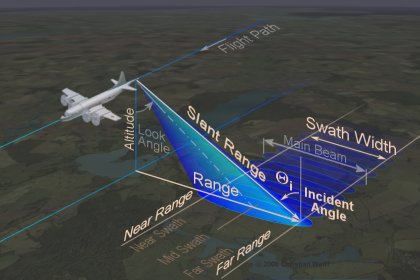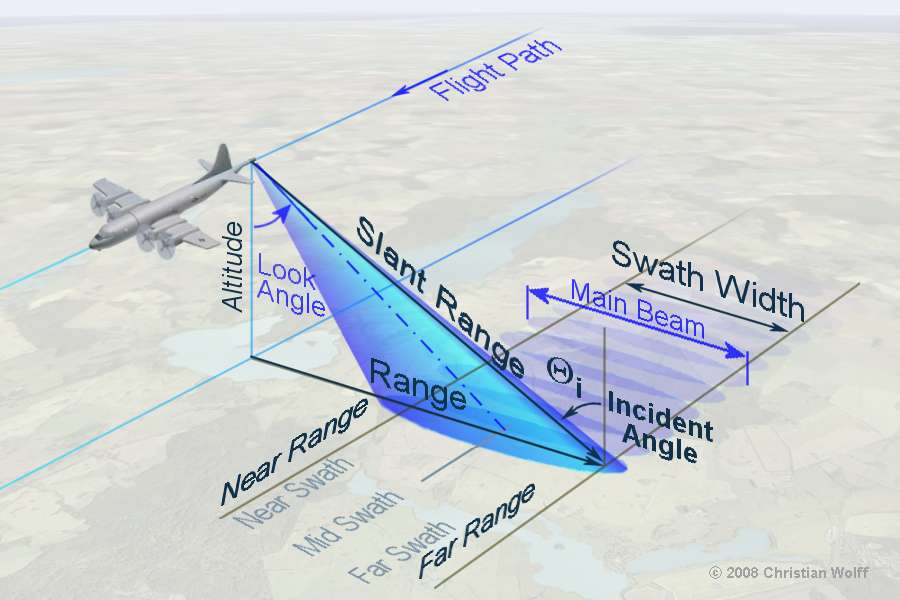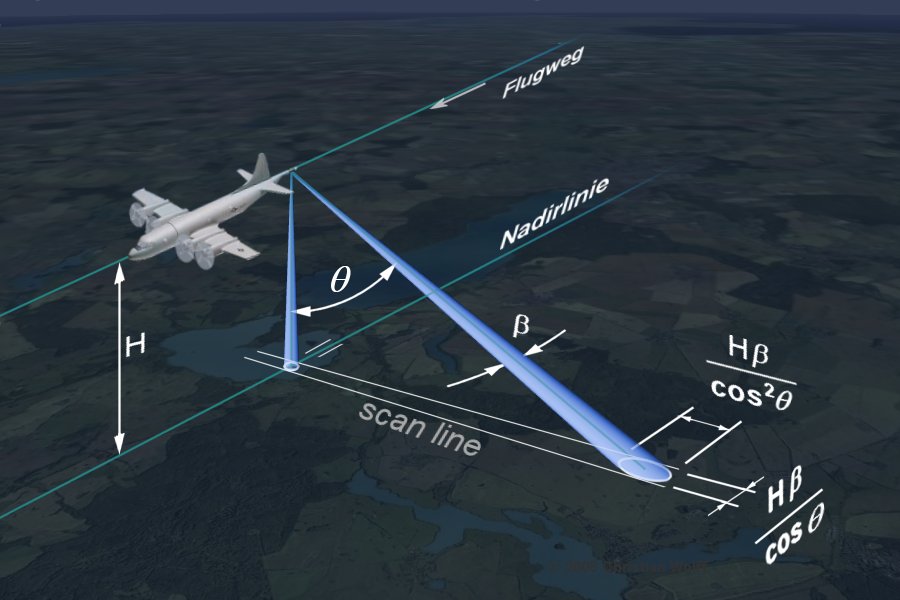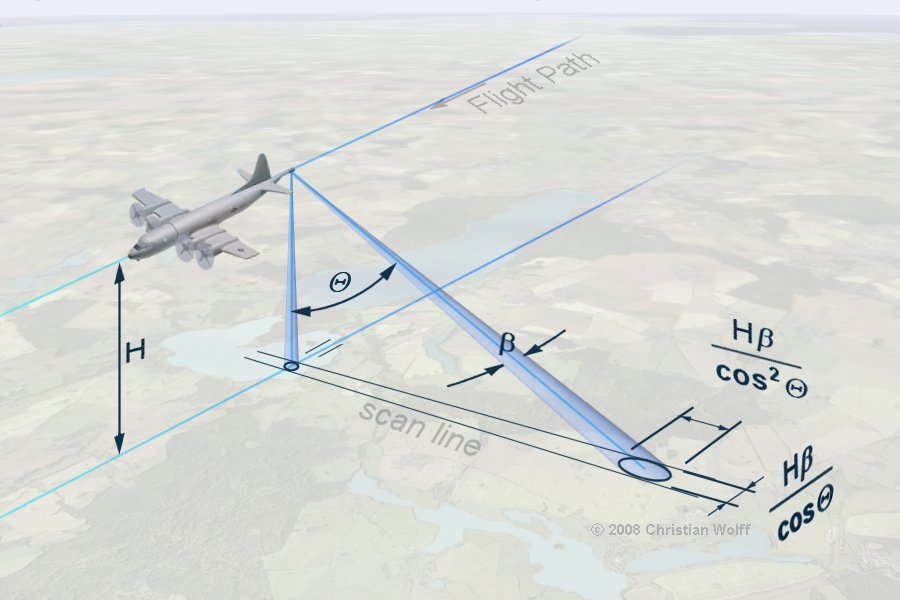Side Looking Airborne Radar (SLAR)

Figure 1: Side-looking viewing geometry of imaging radar system.

Figure 1: Side-looking viewing geometry of imaging radar system.
Side Looking Airborne Radar (SLAR)
The platform (aircraft or satellite) of an side-looking airborne radar (SLAR) travels forward in the flight direction with the nadir directly beneath the platform. The microwave beam is transmitted obliquely at right angles to the direction of flight illuminating a swath. Range refers to the across-track dimension perpendicular to the flight direction, while azimuth refers to the along-track dimension parallel to the flight direction.
Swath width refers to the strip of the Earth’s surface from which data are collected by a side-looking airborne radar. It is the width of the imaged scene in the range dimension. The longitudinal extent of the swath is defined by the motion of the aircraft with respect to the surface, whereas the swath width is measured perpendicularly to the longitudinal extent of the swath.
The SLAR is a real aperture radar primarily. This requires a reasonable large antenna for adequately angular resolution. The azimuth resolution, Ra, is defined as
| Ra = | H · λ | H is the height of the antenna, (height of the airplane) L is the geometric length of the antenna, λ is the wavelength of the transmitted pulses, and θ is the incidence angle |
(1) |
| L · cos θ |

Figure 2: Resolution cell variation.

Figure 2: Resolution cell variation.
The equation shows, that with increasing altitude decreases the azimuthal resolution of SLAR. A very long antenna (i.e., large L) would be required to achieve a good resolution from a satellite. Synthetic Aperture Radar (SAR) is used to acquire higher resolution.
The size of the ground resolution cell increases on the side of the nadir as the distance between radar platform and the ground resolution cell increases. This means that the ground resolution cells are larger towards the edge of the image than near the middle. This causes a scale distortion, which must be accounted for.
At all ranges the radar antenna measures the radial line of sight distance between the radar and each target on the surface. This is the slant range distance. The ground range distance is the true horizontal distance along the ground corresponding to each point measured in slant range. The cross-track resolution, Rr, is defined as:
| Rr = | c0 · tp | c0 is the speed of light tp is the pulse duration of the transmitter, and θ = incidence angle |
(2) |
| 2 sin θ |
Example given:
For an SLAR with the following characteristics:
λ = 1 cm,
L = 3 m,
H = 6000 m,
θ = 60°, and
tp = 100 ns,
has got a resolution of
Ra = 40 m and
Rr = 17.3 m
Note: The same SLAR on a platform in a height of 600 km would achieve an azimuth-resolution of Ra = 4000 m.
